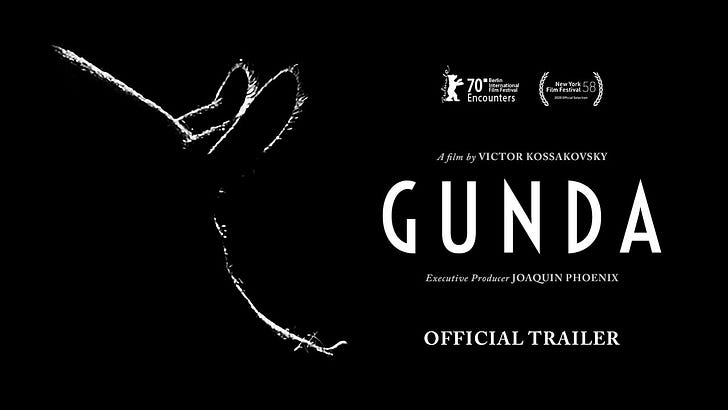Two months ago, an event which sparked off the idea for this newsletter: I watched Gunda, a black and white film with no dialogue or voice over, about an assortment of farm animals — a sow (the titular Gunda) and her cute-as-a-button piglets, who are born in the first seconds of the film; a few scrabbly, intelligent-looking chickens; some gentle cows. There’s no sense of a beginning or an end in the film; or there is a sense of a beginning, only insofar that new life constitutes a beginning.
Gunda isn’t like anything else I’ve watched. The closest thing I remember is First and Last Men, an architectural film by the late Johann Johannson — also in black and white, also observatory in nature — focusing on abandoned structures in former Soviet states and narrated by (who else?) Tilda Swinton. It doesn’t even come close, though. First and Last Men is about something; Gunda just is.
A film without dialogue, without music, without colour; it’s a meditation I drifted in and out of that. In watching I reached a fugue state that is so rare in consumption. The nearest comparison I can find is the flow state of making, in which the essence of the moment can rarely be captured: In singing, in reading, in acting. To be taken over by something else. It’s what I chase these days under the pandemic; in lieu of taking my body out of a space I choose to go elsewhere in my mind.
To devote your attention deeply to something, think upon it. That’s an act of love. Mary Oliver: Attention is the beginning of devotion. I hold this phrase in my head like an heirloom, a gift from like-hearts over years.
While watching Gunda the film I thought about how I can turn my lens on someone I like, to put a spotlight of beauty on them, just as how the lens is turned on Gunda the sow; how you can make anything in the world beautiful by refining your lens on them. The smallest mote of dust deserves attention.
There’s an early scene (you can see a little of it in the trailer) which takes place in a pig sty, with soft sunlight streaming in and the camera smoothly panning all around the piglets and I had to wonder how that was done, how that close up could be planned for and executed without disrupting the piglets with track noise or human presence. Even as the front of my mind was soaking in the moment, the back of my mind was trying to be there, in the making-of.
So much of how we live in this world is about seeing and about choosing to see.
To turn your attention to these animals at ground level is a way of seeing not just them but yourself, and to build an identity as a person who has experienced this film and others like it.
I thought of: The number of choices which form a life. To make a film like this, to watch a film like this, to be moved by a film like this. How many of these choices have been, are, will continue to be made available to me?
☼
With thanks to G, who put much in motion by spurring me on to start our monthly newsletter together, and K, who planted and watered the seeds for all of my film education.



